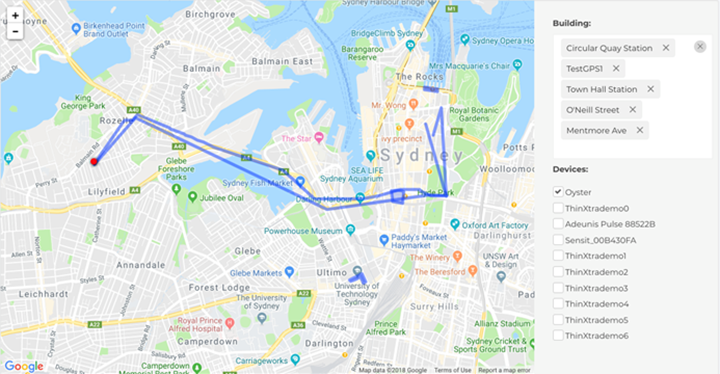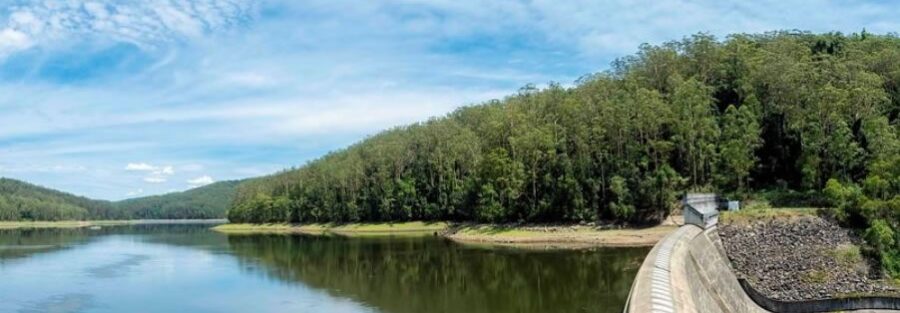Case Study: Empowering Smarter Asset Tracking for Hunter Water with IoT and Cypernex
Background: About Hunter Water
Hunter Water Corporation is a state-owned utility responsible for providing drinking water, wastewater, recycled water, and stormwater services to over 600,000 people across the Lower Hunter region of New South Wales, Australia. As stewards of a critical natural resource, Hunter Water is committed to sustainable water management and long-term service delivery that aligns with community expectations and environmental stewardship.
In 2019, Hunter Water was guided by its “Your Voice, Our Water” strategy, a plan shaped around a 1-year, 2-year, and 5-year horizon aimed at enhancing service reliability, community resilience, and environmental sustainability. Central to this vision were:
- Smarter asset management through innovation and technology
- Reduced water loss through better monitoring and maintenance
- Improved operational efficiency to reduce costs and environmental footprint
- Sustainable infrastructure investment for long-term resilience
In line with these priorities, Hunter Water began exploring digital transformation opportunities to align asset tracking with emerging IoT (Internet of Things) technologies.
Challenge: Navigating the Digital Transformation of Field Operations
With a large and distributed infrastructure that spans remote, rugged terrain and urban centers, Hunter Water faced a critical challenge: the inability to consistently and accurately track the location, movement, and condition of key field assets.
These assets — which included mobile plant equipment, maintenance vehicles, and containerized systems — often moved across regions for fieldwork, sometimes without authorization or proper documentation. Traditional tracking solutions lacked the flexibility, robustness, and interoperability needed in Hunter Water’s demanding operating environment.
Key requirements included:
- Tracking movement in real-time
- Alerting when assets were moved or tampered with
- Capturing environmental conditions such as temperature and shock
- Long battery life and minimal maintenance
- Integration with enterprise systems for seamless operations
Solution: Integrated IoT Tracking with Cypernex
To address these needs, Hunter Water partnered with Cypernex, a technology platform specializing in IoT data aggregation, normalization, and analytics.
At the heart of the initiative was a proof-of-concept (PoC) project that demonstrated how Cypernex could deliver a single-pane-of-glass visibility into all deployed IoT devices — integrating location data, condition metrics, and enterprise asset management systems into one cohesive platform.
Use Cases Implemented

Cypernex enabled Hunter Water to track and manage a diverse set of real-world scenarios:
- Asset Geofencing: Alerts triggered when assets exited storage or entered job sites, increasing operational control and reducing unauthorized use.
- Movement History and Playback: Enabled investigation into lost or delayed assets and provided clarity on asset usage over time.
- Environmental Monitoring: Devices captured shock, temperature, and humidity data to protect sensitive equipment.
- Job-Based Tracking: Devices assigned to job numbers and sites created traceable, auditable movements.
- Multi-device Support: Support for GPS, LoRaWAN, and environmental sensors allowed flexible deployment across varied locations.
Technology Stack and Capabilities
- LoRaWAN and Sigfox: Used for energy-efficient communications where coverage was available.
- GPS-based tracking: Enabled real-time location visibility with minimal latency.
- Remote software updates: Ensured longevity and compliance with evolving firmware requirements.
- Custom geofence management UI: Allowed field teams to draw and manage boundaries dynamically.
- Interoperability: Cypernex integrated into Hunter Water’s broader digital ecosystem, supporting workflows, scheduling, and ticketing systems.
The Cypernex platform not only normalized and analyzed data from disparate device types but also provided dashboards and alerts, allowing operational teams to take immediate action on asset movement or misuse.
Outcome: A Strategic Step Toward Smarter Utility Management
At the conclusion of the PoC, Hunter Water gained:
- Real-world validation of IoT technologies across diverse asset types and terrains
- Operational insights that were previously unavailable or delayed
- Simplified management by consolidating all device data under one platform
- Greater control over field asset utilization and responsiveness to unexpected events
- A framework to scale future IoT deployments aligned with sustainability goals
This initiative proved instrumental in helping Hunter Water build a robust, interoperable IoT infrastructure — reducing reliance on mismatched tools and vendors, improving operational efficiency, and aligning with its long-term sustainability and digital transformation strategy.
Looking Ahead
The success of this pilot project positioned Hunter Water to expand IoT capabilities across additional use-cases, including:
- Water loss monitoring
- Environmental compliance
- Predictive maintenance
- Energy usage optimization
As utilities face mounting challenges around climate, resource management, and infrastructure resilience, Hunter Water’s early investment in smart asset tracking serves as a model for how IoT can drive transformation in the public water sector.



